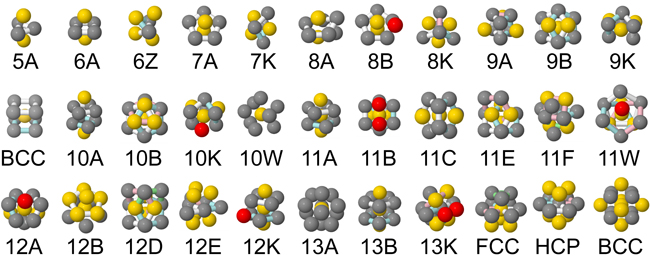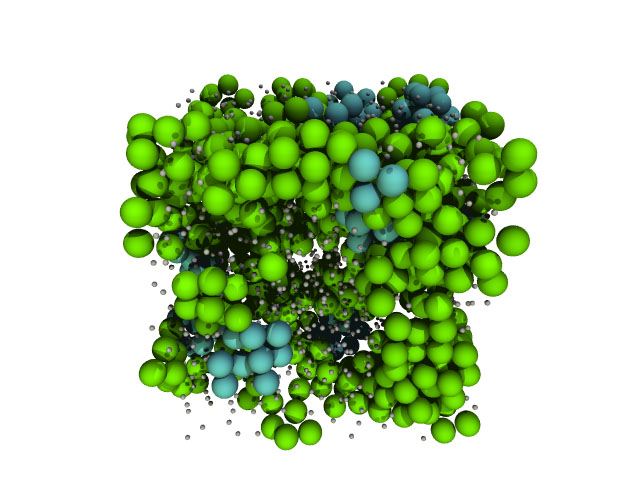|
Topological Cluster Classification 
Clusters identified by the TCC. Number is the number of particles in the cluster, letters refer to different models. See our GitHub page for more details about the code. The topological cluster classification (TCC) identifies a zoo of 33 clusters in condensed matter. These are the minimum energy clusters of for classical atoms interacting via a range model potentials, for example Lennard-Jones and Morse. These include cases where the interaction range is much shorter than the molecular size (appropriate to colloids). The TCC is a powerful tool for identification and understanding of amorphous structure in a range of simple materials. If you would like to use the TCC, the files may be downloaded here, and a how to page is available here. Please note that the TCC code is totally unsupported. If you publish with the TCC you must cite our paper [1]. If you would like to download and run the TCC, please see the the documentation. 
Example of the output of the TCC. Colloidal hard spheres form "10B" clusters (green) and these compete with, and act to suppress crystal nucleation (crystals are shown in cyan). For further details on the role of the 10B cluster in the crystallisation, please take a look at
this paper [2].
|
|
|
|
|